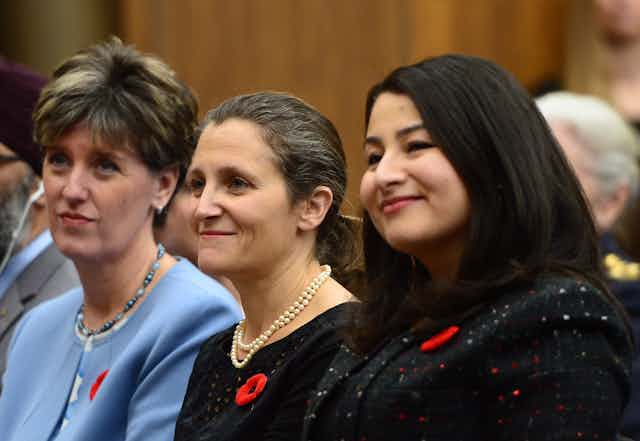On Feb. 24, more than 50 women gathered at Guelph City Hall for the city’s first-ever women’s “campaign school,” hosted by city councillor June Hofland.
The enthusiasm at the event was palpable, but so too were concerns about the harassment the potential candidates were likely to endure for the sake of running for office.
The barriers facing women entering politics are well-established. For example, because women earn lower wages than men on average, and are disproportionately responsible for caring for their families, there are significant obstacles due to campaign financial requirements, the need for flexible work schedules and lack of access to child care.
These barriers can be exaggerated for racialized women, Indigenous women and women with disabilities. They face even larger pay inequities.
Another barrier is women’s social capital — the benefits that come through personal and professional networks — which is not as advantageous as men’s when it comes to accessing political power or drumming up campaign financing.
Structural issues, including our first-past-the-post electoral system that favours incumbent candidates, and a masculine political culture are also problematic, not to mention racism, heterosexism and the experiences of Indigenous women — who did not even have the right to vote federally until 1960 — with colonization.
Lack of representation
Related to the struggle is evidence highlighting persistent barriers to women’s equality more broadly. While there is some variation in the severity and form of these barriers across various sectors, it’s safe to say that many women have to leap significant obstacles to seek office at any level of government.
With these and other barriers come the longstanding issue of lack of representation. With the exception of the Canadian Senate, women still hold on average less than 30 per cent of seats in government whether at the federal, provincial, or municipal level.

The numbers for heads of governments are lower still. And contrary to commonly held beliefs, women are no better represented at the municipal level of government than at any other level of government.
Lack of gender diversity is not our only problem.
An unpublished 2015 survey of just over 600 elected municipal officials in Ontario, conducted by Leanne Piper, then a master’s student and still a Guelph city councillor, paints a very homogenous picture of our representatives.
Seventy per cent are over age 50; 91 per cent were born in Canada; 92 per cent identify as Christian. Eighty per cent are married, and only 2.1 and 1.4 per cent identify as visible minorities and Indigenous people respectively.
Social media abuse
During and following elections, women face a particularly difficult additional problem — harassment by staff, colleagues and even citizens. Last month, Toronto Star reporter Samantha Beattie wrote about the fact that several women who are Toronto city councillors and school board trustees have experienced constituent harassment.
Nearby, the problem has also been documented related to women councillors in Burlington, Ont., and is of course a problem that affects women seeking and holding office across the country and around the world.
Women at Guelph’s campaign school, and in other forums where political women gather, discuss the particularly pernicious attacks that they fear, or have faced, on social media.
As with all complex social and political challenges, a narrow solution will not work. But a number of things could help.
How to bring about change
Internal anti-harassment policies are one essential piece of the solution. Many municipalities have these policies in place.
A somewhat dated study focused on American case law related to sexual harassment. It offers a number of suggestions to municipalities seeking to thwart harassment, including “creating efficient and responsible complaint channels,” using anonymous surveys to monitor changes in harassment incidences and experiences and offering diversity training as a way of working “[towards better] communication [and respecting] each other’s differences.”
A broader need, though, is to focus on creating more inclusive policies at the municipal level, which we can reasonably expect will help to create a climate that is more welcoming of diversity and less tolerant of harassment.
There are a number of resources to help with the task. In Canada, the City for All Women Initiative (CAWI) is a longstanding partnership of “women from diverse communities, organizations and academia working with municipal decision-makers to create a more inclusive city and promote gender equality.”
Their work includes the creation of important tools such as the Guide to Advancing Equity and Inclusion in municipalities.
The Alberta Urban Municipalities Association Welcoming and Inclusive Communities (WIC) initiative has also created a toolkit they describe as being “designed to help your municipality become a better place for everyone.”
Organizations such as Women Transforming Cities, and policy documents such as Vancouver’s Gender Equity Strategy (2018-2028), are critical for building broad-based equity commitments.
The principles underpinning the Vancouver initiative include a commitment to inclusive decision-making and to recognizing that women’s experiences can also be affected by their physical ability, Indigenous status, race, age and many other factors.
We have a long way to go to combat widespread issues of harassment, but doing so at the municipal level can be advanced through initiatives that make cities and towns safer and more inclusive places for everyone.

